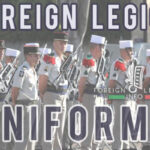The crisp lines of a scarlet-trimmed collar framing a sharply cut nape. White gloves, meticulously folded, resting against the gleam of a brass buckle. A bold red stripe accentuating the blue of the trousers, leading to shoes polished to a mirror shine, reflecting the gold buttons ascending the chest adorned with medals. This is the iconic image of a U.S. Marine in dress blues.
The Marine Corps dress blue uniform, renowned for its stark elegance, is deeply entrenched in nearly 250 years of Marine Corps heritage. For many, a Marine in dress blues embodies the very essence of a “man in uniform.” Recruits are taught that each element of this uniform is a tangible link to the Corps’ storied past and combat achievements. However, delving into the archives of the Marine Corps Historical Company and the National Museum of the Marine Corps reveals that some of these deeply held beliefs are more nuanced, forged in the crucible of political battles to safeguard the Corps’ identity.
The Myth of Jones’ Marines and the Red Trim
Popular tradition attributes the blue hue of the uniform to the Marine Corps’ naval affiliations, while the distinctive red trim is often said to honor the Marines who served under Captain John Paul Jones on the Bonhomme Richard during the Revolutionary War. Jones, an undeniable naval legend, a figure akin to Chesty Puller in spirit and Sun Tzu in strategy, is indeed a part of Marine lore. However, the connection between his Marines and the red trim is more legend than fact.
US Marine in dress blues uniform. The symbolic significance taught to Marines about their dress blues is often based on historical interpretation rather than strict fact.
“Unfortunately, there’s no historical evidence to substantiate that claim,” explains retired Gunnery Sergeant Thomas E. Williams, Director of Operations for the United States Marine Corps Historical Company. “These cherished legends often emerged during periods when the Marine Corps was fighting for its very survival, not just against external enemies, but also in the political arena to maintain its unique identity and existence.”
Throughout its history, the Marine Corps has faced such internal battles, notably during Andrew Jackson’s presidency and again after World War I. In the post-WWI era, under the leadership of General John A. Lejeune, the Corps engaged in what could be termed the “Battle of Capitol Hill,” a fight for institutional relevance.
Williams further clarifies, “While these myths and traditions may not be entirely rooted in historical accuracy, they served a crucial purpose in bolstering the image and preserving the heritage of the Corps during critical times.”
The public affairs apparatus under General Lejeune skillfully wove together historical fragments to create a compelling narrative, an “elevator pitch” for the uniform’s legacy. The connection to Jones’ Marines might stem from a 1779 entry in John Adams’ diary, where Jones and his Marines are described with a mix of awe and reservation. Adams noted their “English uniforms, red and white,” a departure from the Continental Army’s uniform, highlighting Jones’s eccentric character even in his men’s attire.
Historically, the first official Marine Corps blue uniforms, adopted after the formal establishment of the Corps in July 1798 (following the disbandment of the Continental Marines), were actually repurposed rifleman uniforms from the Legion of the United States. Major Edwin North McClellan, a former officer in charge of the Historical Section, details in “Uniforms of American Marines: 1775-1932” that this initial blue uniform consisted of “Plain short coats of blue, with a red belt, edged with red, and turned up with the same, with common small naval buttons, with blue pantaloons edged with red, and red vests.” In true Marine fashion, they adapted and excelled with the resources available.
The Quatrefoil: Fashion, Not Function
The ornate, cross-shaped braid, known as the quatrefoil, adorning the top of a Marine officer’s hat (or “cover”), is another element shrouded in myth. Marine lore suggests it originated during the War of 1812, where officers wore rope crosses to be distinguished by Marine sharpshooters positioned high in ship riggings during ship-to-ship combat.
However, the practicality of sharpshooters identifying a small quatrefoil from the heights of ship rigging on a moving enemy vessel is questionable. The more plausible explanation is that the quatrefoil was simply a fashionable French military embellishment of the era, adopted by both the U.S. Army and Marine Corps.
The Leatherneck: Posture over Protection
The stiff, standing collar, a defining feature of both officer and enlisted dress blue uniforms, is linked to the historical “leather stock” worn by Marines in the early 19th century, giving rise to the enduring nickname “leatherneck.” Contrary to popular belief perpetuated in recruit training, this leather stock was not designed to deflect sword blows.
“Having examined numerous period weapons, I can confidently say that a leather stock would offer negligible protection against a cutlass,” Williams states. “The primary function of the leather stock was to enforce proper posture, compelling Marines to keep their heads held high.”
The Blood Stripe: A Symbol of Sacrifice
The scarlet “blood stripe” running down the trouser seam is often cited as a tribute to the Marines who bravely fought and fell in the Battle of Chapultepec during the Mexican War in 1847. While a powerful narrative, it’s only partially true.
During the Battle of Chapultepec, Marine sergeants actually wore a dark blue stripe edged in red, precluding the blood stripe’s direct origin from that battle. Red trouser stripes for officers and non-commissioned officers were officially introduced in 1892. While not initially intended to commemorate Chapultepec specifically, the Marine Corps now rightfully associates the blood stripe with the sacrifices of all Marines who have fallen in service.
Close up of a US Marine dress blues uniform collar, highlighting the high collar design. Despite common lore, the high, leather stock collar was designed for posture, not sword defense.
Enduring Symbols of the Corps
Amidst the myths, some elements of the dress blues uniform genuinely reflect deep-rooted Marine Corps history. The gold buttons adorning the dress blue coat feature one of the earliest Marine Corps emblems – the eagle and anchor encircled by 13 stars – a design dating back to 1804, making it the oldest military insignia still in continuous use.
In 1868, the now-iconic eagle, globe, and anchor (EGA) emblem was formally adopted. The eagle symbolizes the nation the Corps defends, the globe represents its global reach, and the anchor signifies its naval heritage and worldwide expeditionary capabilities. Together, the EGA embodies the Marine Corps’ unwavering commitment to national defense across air, land, and sea. The EGA appears prominently on the dress blue uniform, featured on the dress white cover, the collar, and the belt buckle of enlisted Marines above the rank of corporal.
Swords of Tradition
The sword, whether sabre or saber, is the oldest weapon still actively carried in the U.S. military, and the Marine Corps incorporates two distinct swords into the dress blue uniform. The history surrounding these blades is relatively straightforward.
Marine officers carry the Mameluke sword, a tribute to Lieutenant Presley O’Bannon’s daring 1805 expedition across 600 miles of North African desert to capture Derna in Tripoli, where the American flag was first raised over foreign soil – an event immortalized in the Marines’ Hymn as “to the shores of Tripoli.”
Marine sergeants have carried swords since the Corps’ inception, using them in combat through the Civil War. The first officially designated NCO sword was introduced by Commandant Archibald Henderson in 1826. The current Marine NCO sword, worn for parades and ceremonies by enlisted Marines above corporal, was authorized by the sixth Commandant of the Marine Corps, Colonel John Harris.
The Enduring “Lejeune Version”
With uniform elements stretching back to the nation’s founding and the Corps’ earliest days, it’s no surprise Marines take immense pride in their dress blues. Having explored both the factual history and the embellished lore, when asked about the history of the dress blues, the likely answer you’ll still receive is what we can now affectionately call the “Lejeune version” – a testament to the power of tradition and the carefully crafted narrative that binds Marines together.
– Originally written by Joseph Andrew Lee, USO Multimedia Journalist.


